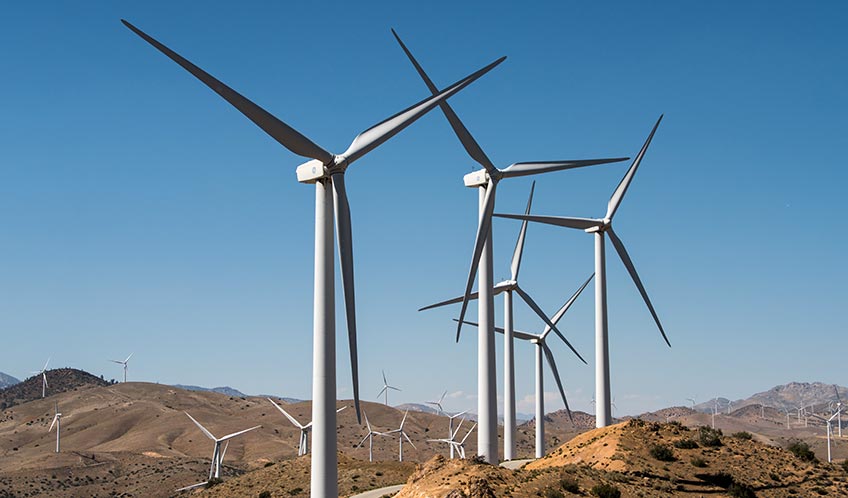
Wind turbines on large-scale wind farms currently operate independently of one another, which can make it costly and difficult to diagnose and address performance issues.
A partnership between the National Renewable Energy Laboratory (NREL) and the wind solutions company WindESCo, funded through the U.S. Department of Energy’s Small Business Voucher Project, aims to improve wind plant performance by applying solutions that facilitate communication among turbines.
The project gathered wind power plant data and used it to simulate using sensors that enable data sharing among turbines, allowing them to theoretically adjust in real time to changing wind directions and other conditions. The project demonstrated the power output that could have been gained if this operating method, referred to as collective consensus control, had been used at the wind plant.
Rows of wind turbines on hilly terrain at a wind power plant.
Allowing communication among wind turbines can improve the overall power performance of large-scale wind farms. Photo by Dennis Schroeder, NREL
Making real-time adjustments can improve power output and reduce wear and tear on the turbines. By allowing turbines to communicate with one another, they can act in a more coordinated manner. Turbines that are not properly oriented can “learn” from others when they need to correct or when adjustments need to be made if the wake of one turbine is affecting the performance of another.
The yaw motion of individual turbines is reduced as well, meaning turbines spend less time “chasing the wind” to find the optimal positioning. The research team hopes these solutions will allow wind farm operators to see a significant annual energy production gain.
“Ultimately, we’re aiming for a paradigm shift that has wind farms operating centrally, rather than each individual turbine operating independently,” said NREL Senior Researcher Jennifer King. “Wind farms put out a plethora of data; we’re just harnessing it so turbines can receive and adjust to real-time feedback.”
Use of this data would allow turbines to compare performance with one another, adjust to atmospheric conditions, and operate more efficiently—which could also reduce wind plant maintenance costs.
NREL would like to conduct field validation on the collective consensus control method and has submitted a technology commercialization fund proposal for this work. In the meantime, the Atmosphere to Electrons initiative is providing funding for basic wind turbine controls research and improvements.
Read more about NREL’s advanced wind turbine control systems research to maximize energy extraction and reduce structural dynamic loads.
Source: Company Press Release






